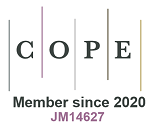An Econometric Analysis of Tax Evasion and Its Consequences on Economic Performance
Abstract
Full Text: PDF
Keywords
References
Tanzi, Vito. "The underground economy in the United States: Annual estimates, 1930-80 (L'économie clandestine aux Etats-Unis: Estimations annuelles, 1930-80)(La" economía subterránea" de Estados Unidos: Estimaciones anuales, 1930-80)." Staff Papers-International Monetary Fund (1983): 283-305. doi:10.2307/3867001.
Dell’Anno, Roberto, and Adriana AnaMaria Davidescu. “Estimating Shadow Economy and Tax Evasion in Romania. A Comparison by Different Estimation Approaches.” Economic Analysis and Policy 63 (September 2019): 130–149. doi:10.1016/j.eap.2019.05.002.
Hyman, David N. Public finance: A contemporary application of theory to policy. Cengage Learning, 2014.
Christians, Allison. “Distinguishing Tax Avoidance and Evasion.” The Routledge Companion to Tax Avoidance Research (October 2, 2017): 417–429. doi:10.4324/9781315673745-26.
MacAfee, Kerrick. "A Glimpse of the hidden economy in the national accounts." Economic Trends 136, no. 1 (1980): 81-87.
Blades, Derek. "The hidden economy and national accounts." The OECD Observer 114 (1982): 15.
Gupta, P., and R. Mehta. "An estimate of underreported national income." Journal of Income and Wealth 5, no. 2 (1981): 109-113.
Isachsen, Arne Jon, and Steiner Strom. “The Size and Growth of the Hidden Economy in Norway.” Review of Income and Wealth 31, no. 1 (March 1985): 21–38. doi:10.1111/j.1475-4991.1985.tb00496.x.
[9] Dell’Anno, Roberto. “The Shadow Economy in Portugal: An Analysis with the Mimic Approach.” Journal of Applied Economics 10, no. 2 (November 2007): 253–277. doi:10.1080/15140326.2007.12040490.
Cagan, Phillip. “The Demand for Currency Relative to the Total Money Supply.” Journal of Political Economy 66, no. 4 (August 1958): 303–328. doi:10.1086/258056.
Alkhdour, Rajeh. "Estimating the shadow economy in Jordan: causes, consequences, and policy implications." PhD diss., Colorado State University, 2012.
Economic and Social Council. Tax Evasion in Jordan: Causes, Methods, and Magnitude, Amman, Jordan (2014).
Alghazo, abdalwahab, The macroeconomics impacts of tax evasion in Jordan, unpublished Doctoral Dissertation, unpublished Doctoral Dissertation, university of Jordan, Amman (2020).
Yasmin, Bushra, and Hira Rauf. “Measuring the Underground Economy and Its Impact on the Economy of Pakistan.” The Lahore Journal of Economics 9, no. 2 (July 1, 2004): 93–103. doi:10.35536/lje.2004.v9.i2.a5.
Petanlar, Saeed Karimi. Ahmad Jafari Samimi, and. Alireza Aminkhaki. “An Estimation of Tax Evasion in Iran.” Journal of Economics and Behavioral Studies 3, no. 1 (July 15, 2011): 8–12. doi:10.22610/jebs.v3i1.250.
Mehrara, Mohsen, and Yazdan Gudarzi Farahani. "The study of the effects of tax evasion and tax revenues on economic stabilities in OECD countries." World Scientific News 33 (2016): 43-55.
Medina, Leandro, and Friedrich Schneider. “Shadow Economies Around the World: What Did We Learn Over the Last 20 Years?” IMF Working Papers 18, no. 17 (2018): 1. doi:10.5089/9781484338636.001.
Di Nola, Alessandro, Georgi Kocharkov, Almuth Scholl, and Anna-Mariia Tkhir. “The Aggregate Consequences of Tax Evasion.” Review of Economic Dynamics 40 (April 2021): 198–227. doi:10.1016/j.red.2020.09.009.
Allingham, Michael G., and Agnar Sandmo. "Income tax evasion: A theoretical analysis." Journal of public economics 1.3-4 (1972): 323-338. doi:10.1016/0047-2727(74)90037-1.
Spicer, Michael W., and Scott B. Lundstedt. "Understanding tax evasion." Public Finance= Finances publiques 31.2 (1976): 295-305.
Ameyaw, Bismark, and Dominic Dzaka. “Determinants of Tax Evasion: Empirical Evidence from Ghana.” Modern Economy 07, no. 14 (2016): 1653–1664. doi:10.4236/me.2016.714145.
Ahmed, Mehnaz, and Qazi Masood Ahmed. "Estimation of the black economy of Pakistan through the monetary approach." The Pakistan Development Review 34, no. 4 (1995): 791-807.
Kemal, M. Ali. "Underground economy and tax evasion in Pakistan: A critical evaluation." Working Papers & Research Reports (2010): RR-No.
Nelson, Charles R., and Charles R. Plosser. “Trends and Random Walks in Macroeconmic Time Series.” Journal of Monetary Economics 10, no. 2 (January 1982): 139–162. doi:10.1016/0304-3932(82)90012-5.
Pesaran, M. Hashem, Yongcheol Shin, and Richard J. Smith. “Bounds Testing Approaches to the Analysis of Level Relationships.” Journal of Applied Econometrics 16, no. 3 (2001): 289–326. doi:10.1002/jae.616.
Fishburn, Geoffrey. “Tax Evasion and Inflation.” Australian Economic Papers 20, no. 37 (December 1981): 325–332. doi:10.1111/j.1467-8454.1981.tb00359.x.
Engle, Robert F., and C. W. J. Granger. “Co-Integration and Error Correction: Representation, Estimation, and Testing.” Econometrica 55, no. 2 (March 1987): 251. doi:10.2307/1913236.
Toda, Hiro Y., and Taku Yamamoto. “Statistical Inference in Vector Autoregressions with Possibly Integrated Processes.” Journal of Econometrics 66, no. 1–2 (March 1995): 225–250. doi:10.1016/0304-4076(94)01616-8.
Greene, William H. Econometric analysis. Pearson Education India, 2003.
Damodar, N. Gujarati. Basic Econometrics-Damodar N. Gujarati. McGraw− Hill, 2004.
Bekhet, Hussain Ali, and Ali Matar. “Co-Integration and Causality Analysis between Stock Market Prices and Their Determinates in Jordan.” Economic Modelling 35 (September 2013): 508–514. doi:10.1016/j.econmod.2013.07.012.
Hung, Fu-Sheng. “Explaining the Nonlinearity of Inflation and Economic Growth: The Role of Tax Evasion.” International Review of Economics & Finance 52 (November 2017): 436–445. doi:10.1016/j.iref.2017.03.008..
Fishlow, Albert, and Jorge Friedman. “Tax Evasion, Inflation and Stabilization.” Journal of Development Economics 43, no. 1 (February 1994): 105–123. doi:10.1016/0304-3878(94)90025-6.
Pablo Nicolini, Juan. “Tax Evasion and the Optimal Inflation Tax.” Journal of Development Economics 55, no. 1 (February 1998): 215–232. doi:10.1016/s0304-3878(97)00063-1.
Folayan, D. O., and A. G. Adeniyi. "Effects of tax evasion on government revenue generation in Oyo State, Nigeria." European Journal of Accounting, Auditing and Finance Research 6, no. 1 (2018): 76-89.
Cerqueti, Roy, and Raffaella Coppier. “Economic Growth, Corruption and Tax Evasion.” Economic Modelling 28, no. 1–2 (January 2011): 489–500. doi:10.1016/j.econmod.2010.07.006.
Vousinas, Georgios L. “Shadow Economy and Tax Evasion. The Achilles Heel of Greek Economy. Determinants, Effects and Policy Proposals.” Journal of Money Laundering Control 20, no. 4 (October 2, 2017): 386–404. doi:10.1108/jmlc-11-2016-0047.
Cerqueti, Roy, and Raffaella Coppier. “Economic Growth, Corruption and Tax Evasion.” Economic Modelling 28, no. 1–2 (January 2011): 489–500. doi:10.1016/j.econmod.2010.07.006.
DOI: 10.28991/esj-2021-01271
Refbacks
- There are currently no refbacks.
Copyright (c) 2021 Abdullah Ghazo, Qusay Qasrawi







